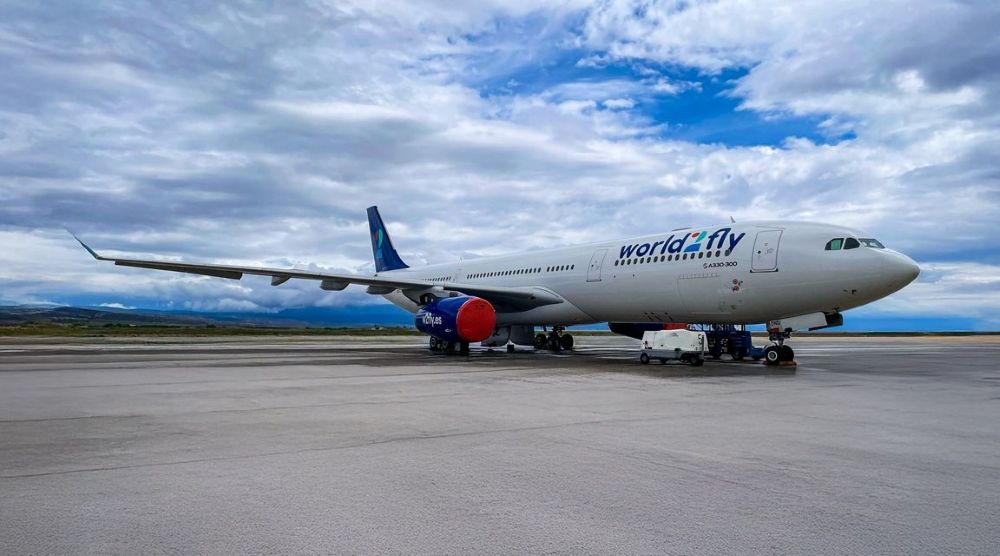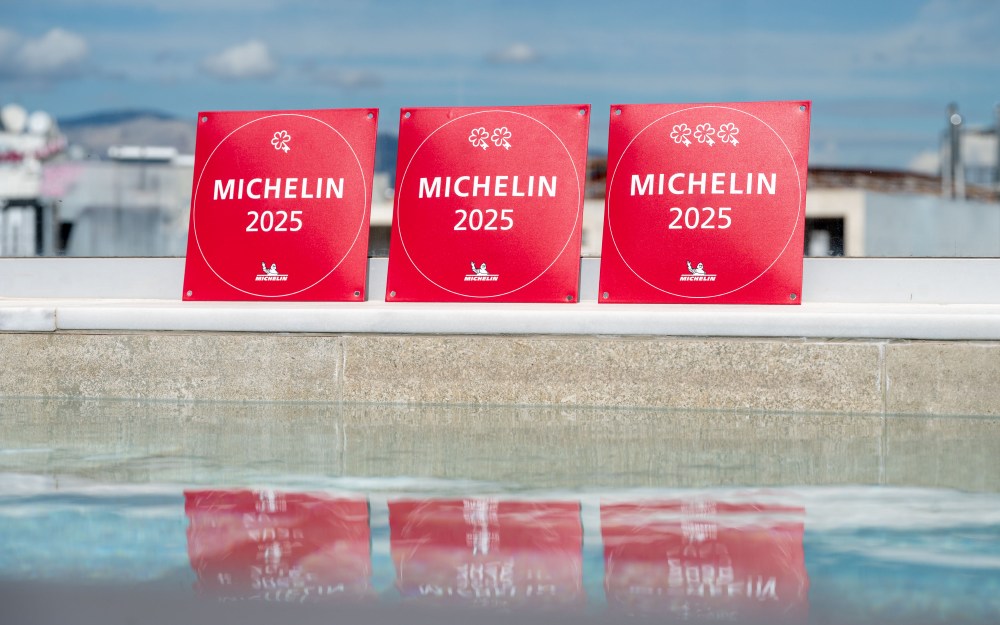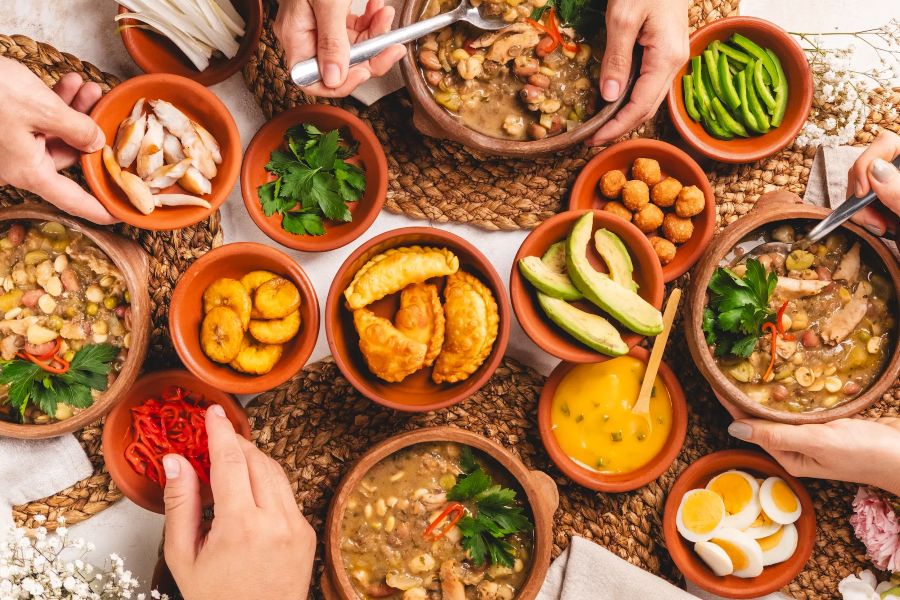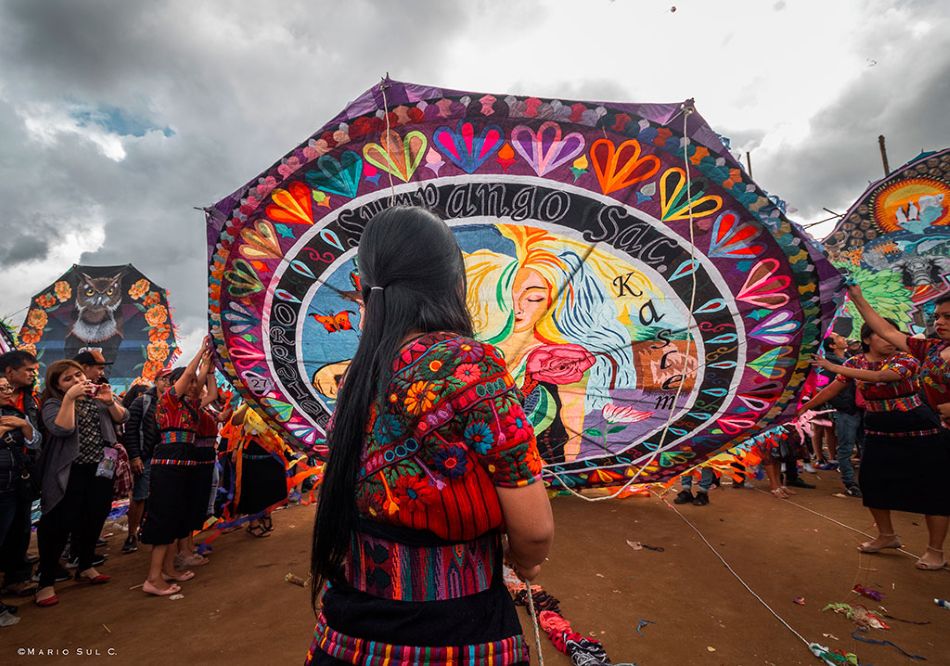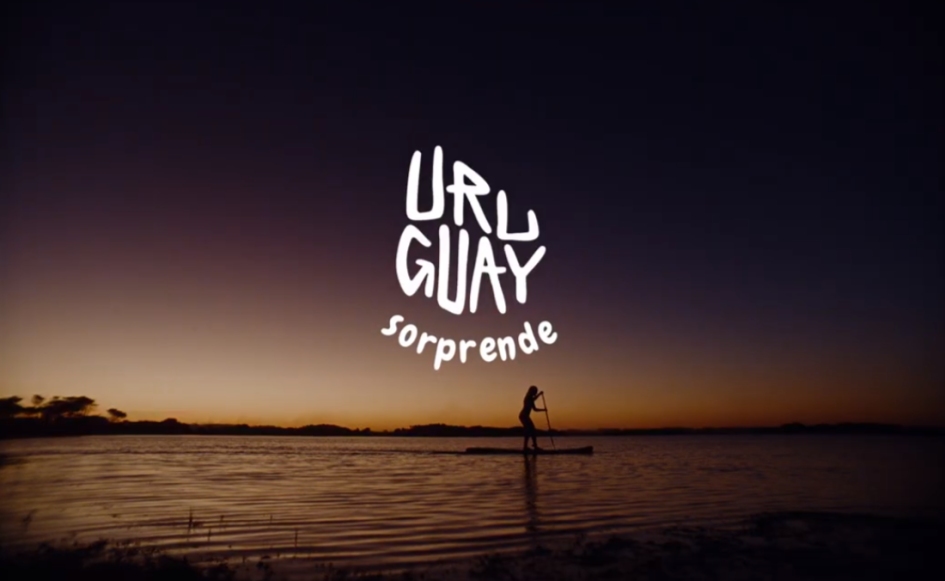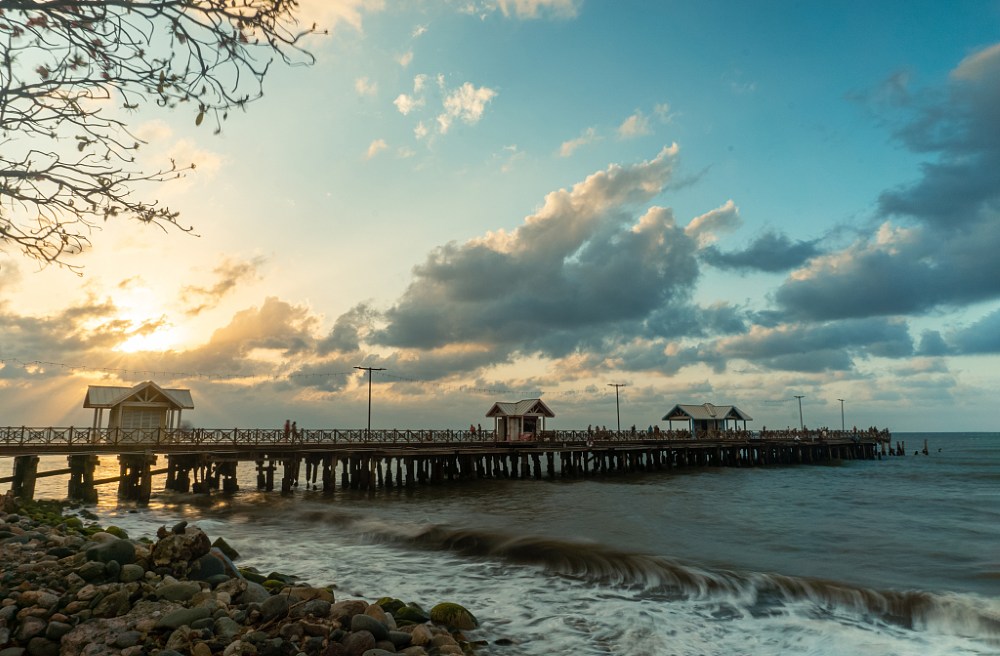Text by Kiara Francius – This article was originally published www.elcafelatino.org
“Dance is the expression of our legitimate joy of living. ~ Rolando Toro Araneda
Latin dances are a symbol of culture in their own right. In Latin America, dance has long been a tool for social interaction. The dances are full of history. Often born of a mixture of origins and cultures, Latin American dances are constantly evolving. Let us trace the history of seven of the symbolic dances of Latin American countries.
The Bachata
Bachata has its origins in the Dominican Republic in the 1960s.
However, elements of this dance and musical genre can be found a few years earlier, as they have their roots in the bolero rhythm – which spread throughout the Latin American continent as early as the 1920s. Bachata also originated from the fusion of other Afro-Caribbean genres such as the Cuban son, the cha cha cha and the merengue. In 1927, the term “bachata”, supposedly of African origin, was first used to describe celebrations where the popular bolero musician was the king of the party.
Since 2019, bachata has been included in the representative list of the Intangible Cultural Heritage of Humanity by UNESCO. In its early days, however, bachata was associated with poverty, vulgarity and coarseness. Coming from the marginalised slums of Santo Domingo, the press and the middle and upper classes referred to the “bachata” style in a denigrating way. Etymologically, ‘bachata’ meant any lively gathering, or backyard party with music, food, drink and dance, rather than a specific musical genre. In the 1930s, bachata was also played and danced in bars, brothels and other so-called ‘indecent’ places.
The vernacular lyrics in bachata sounds, which indirectly raised issues of colour and ‘race’, were hardly combined with the reluctance of Dominicans to acknowledge their African ancestry.
Originally rural, bachata quickly found its way into Dominican cities such as Santiago de los Caballeros, where musicians such as Morito Sánchez made their mark.
Bachata’s low social status, however, began to change as a result of two phenomena. One was the release in 1990 of a massively celebrated and Grammy award-winning recording entitled Bachata Rosa. This sound was performed by Juan Luis Guerra, one of the Dominican Republic’s most established musicians.
The other, much more impactful event was the massive migration of Dominicans to the United States: a migration that peaked in the 1980s and 1990s.
In New York, nostalgic Dominican immigrants, especially those from the working class, could openly embrace bachata’s melodramatic expressions of loss and longing, and the unique Dominican sexual humour of its lyrics, without fear of social approval.
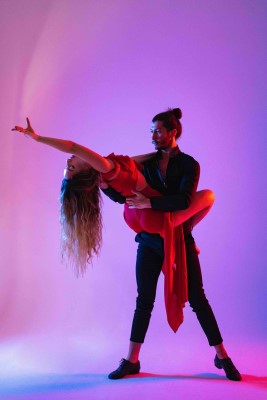
How is Bachata danced ?
The basic movements are a series of steps back and forth and to the sides, with a step to the right with a wiggle while the partner does the same to the left. The left foot should then be brought towards the right foot, with the partner doing the opposite. Finally, the same movement should be performed again before starting again on the other side. Moving the hips gives the body a more sensual attitude.
However, there are many variations of bachata, including modern bachata, Dominican bachata, sensual bachata and traditional bachata.
Salsa
“Cuban music […] speaks in a certain way. ~ Andy Garcia
The term “salsa” refers to both a musical genre and a dance with Cuban origins.
Salsa dancing is a popular Afro-Hispanic influenced dance, first practiced in the streets of Cuba in the 1950s. It later developed into a form called “rueda de Casino”.
It is the mixture of various musical styles, such as “son cubano” and jazz, that gives rise to the rhythm of Salsa.
Havana was the birthplace of many Afro-Cuban dance styles, including salsa. Salsa music was an exciting mix between the sound of the Spanish guitar and African drums. The original term for salsa was “casino”, referring to the clubs (casinos) where people danced this style.
Later, Latin Americans in New York gave it the name “salsa”, meaning figuratively “spicy, charming, spicy”. In the 1940s, Cubans referred to musicians who played in different groups as salseros, but it was still too early to speak of a salsa genre. In the 1970s, salsa really developed thanks to the cultural contribution of the Hispanic community in New York (immigrants from Puerto Rico, Mexico, Cuba and the Dominican Republic).
Three main styles of salsa can be distinguished today: the Cuban style, the Colombian style and the so-called “Puerto Rican” style.
The Cuban style comes from the casino dance and has its roots in the Cuban sound: very African, “in the floor”, with minimalist gestures and pure passes, without footwork. The couple moves mainly in successive circles. It is above all a street dance, popular and social. The rueda de casino, a variant, consists of rounds (rueda) of couples where a leader (la madre) announces the passes to come. The dancers frequently change partners.
The Colombian style, on the other hand, is the most common and is very widespread in the news. It is a very body-to-body dance, where aesthetics and character are more important than figures. The footwork is more complex than most other styles, and sometimes tends towards the twist.
Finally, in France, the so-called “Puerto Rican” style refers to the music preferred by “Puerto Rican” salsa dancers: salsa dura from the 1970s, among others. However, this style does not come from Puerto Rico but from the United States. There are three main variants: the Los Angeles style, the New York style and the Palladium style. In France, “dancing Puerto Rican salsa” generally means dancing the Los Angeles style.
How is Salsa danced ?
Salsa is mostly danced by two people, but it can also be danced alone or with several people: in a line (salsa suelta), with several couples (rueda de casino) or with a leader and two partners. The difficulty of the dance lies in the complexity of the music: the first beat is not always marked in the same way. In order to dance consistently with the music, it is important to know the musical bars.
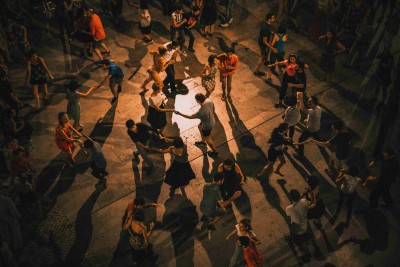
In general, the principle is to alternate left and right steps. For the cavalier, the steps are reversed: right and then left. On the eight beats, the fourth beat is a pause: so we count as follows: “1,2,3 (pause) 5,6,7 (pause)
In Puerto Rican salsa, the movements are made in a line, the guidance is very thorough and the dancer can do many turns.
Salsa still retains strong traces of its African roots: pelvic movements are still present.
Tango
Tango is a Latin American dance with African origins. The dance originated in the popular suburbs of Buenos Aires, in the barrios (neighbourhoods) of the late 19th century. Tango took shape in San Telmo, a poor migrant neighbourhood in the capital. Its greatest influence was the flamenco guitar. It was a working class dance.
At that time, few women lived in Buenos Aires. The men practised together in the streets, before performing their dance with women.
Little by little, the Tango became part of the city as a whole: it was danced at balls, in dance halls…
After developing in various forms in Argentina, the Tango spread throughout the world as a ballroom dance.
After a certain decline, Tango is now experiencing a resurgence in popularity.
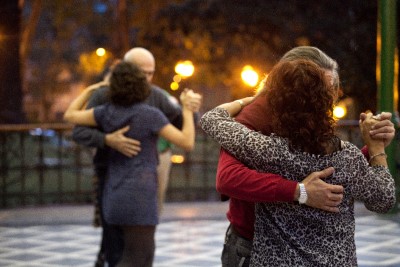
How is the Tango danced ?
Tango is above all a walk. One walks especially on the strong beats of the measure (beats 1 and 3 to 4 of the tango). When dancing a downbeat, the walk speeds up briefly. It is also an improvisational dance, as the dancing couple moves in an impromptu direction at any time.
The Samba
The samba is a dance and musical genre that originated in Brazil, although its roots go back to the time of West African slavery. The dance originated in the favelas or slums of Rio de Janeiro at the beginning of the 20th century, following the arrival of slaves who were finally freed and brought their African dances and percussion.
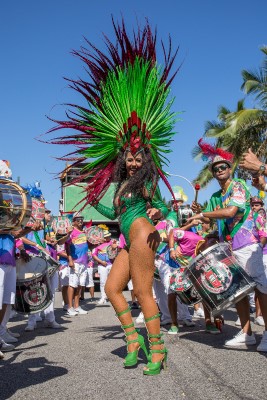
LThe first musical samba, “Pele telefone” by Donga, was recorded in 1917. The samba then spread throughout the world. It later became the official dance of Brazil. This dance represents the idea of celebration, especially during the carnival period. Indeed, the samba became the music of the carnival as early as 1930.
How is the Samba danced ?
This style is danced alone or in couples, to lively music and simple rhythms. The best known solo samba is the samba no pé (foot samba). The whole body is used: the legs move back and forth and the arms sweep the air at the pelvis. The “couple” samba is mainly a ballroom dance with formalized choreographic figures.
Merengue
Where does the merengue come from?
According to the facts, this dance and musical genre appeared in 1850 in the Dominican Republic in the Cibao region.
However, there are several hypotheses regarding the birth of the merengue. It is believed that the merengue originated in the upa habanera dance, which included a dance step called ‘merengue’. Other versions say that the genre comes from the “mangulina” rhythm. The merengue dance has both Dominican and Haitian origins, dating back to the mid-18th century. It is in Haiti and the Dominican Republic that the most similar characteristics to the origins of the dance can be found. One of the aspects that are recognised in particular are the very pronounced hip movements, which differ from the hip movements in international Latin dances.
For many years, merengue was perceived as a rural genre and was highly criticised by the bourgeoisie.
However, in 1930 the Dominican dictator Rafael Trujillo declared the merengue the national dance of the Dominican Republic. From then on, the wealthy class paid more attention to it. Particularly popular in Latin America and parts of the United States, the genre is also performed by Puerto Rican artists. Juan Luis Guerra made merengue internationally known in 1990 with Ojalá que llueva Café.
How is the Merengue danced ?
Today’s version of the merengue is a closed position dance, with the couple turning clockwise. Sometimes a hand is dropped so that one of the two dancers turns around. The steps are simple: the measure consists of eight beats, with a change of foot on each beat (like walking).
Today, merengue is associated with salsa since many salsa moves are more easily done in merengue.
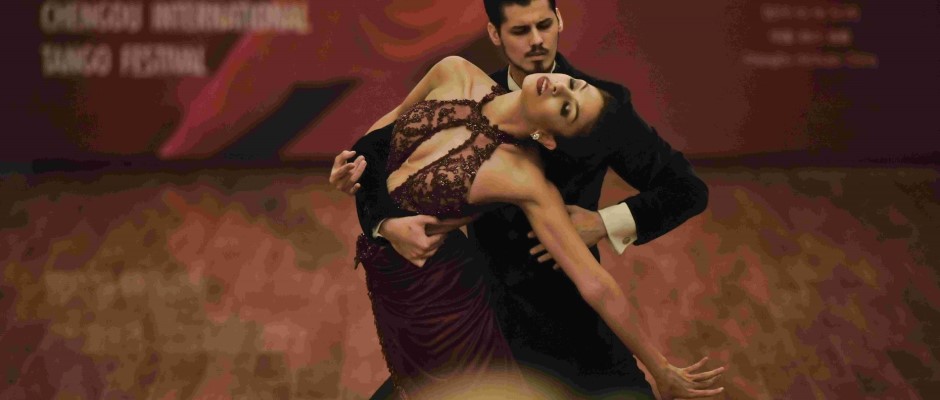
Cumbia
Cumbia originated in the upper part of the Magdalena River valley in eastern Colombia in the geographical area known as the Momposina Depression, more precisely in the area corresponding to the indigenous Pocabuy country in the 17th century. Initially called “cumba”, the name of this dance and musical genre was later changed to “cumbia”. This name comes from the Bantu word “Cumbe”, which refers to a rhythm and dance from Equatorial Guinea (West Africa). This was brought to the Caribbean coast of Colombia by Africans during the Spanish colonial period in the 17th century. For some specialists, the term cumbia has a link with the Cuban word “cumbancha” meaning “party”.
Spanish settlers brought African slaves to work in the mines. Cumbia began as a social dance practiced among slaves to preserve their African heritage. African slaves worked alongside Amerindian slaves. When it was allowed to celebrate certain holidays, the Amerindian instruments were mixed with African drums and rhythms, with the lyrics in their common language: Spanish.
The dance and rhythm of the cumbia were born of a true cultural crossbreeding between the African culture of the slave peoples, the European culture with the Spanish colonisation and the culture of the indigenous peoples.
This is reflected in the presence of carnal movements, symbolic of dances of African origin. The Spanish influence can be seen in the costumes, which are inspired by Spanish culture and which reflect today’s flamenco dress. The men’s clothes are more similar to those used during the encierros (a tradition in which bulls are led to the toril before the bullfight).
In terms of music, the drums are of African origin, the wind instruments of Indian origin, while the popular songs come from Spanish poetry, although adapted to Cumbia. Cumbia became a symbol of cultural identity and national unity.
From the 1940s, cumbia spread to other Latin American countries such as Argentina, Mexico, Peru, Ecuador and Venezuela. Many countries created their own cumbia. The first official Cumbia group, Cumbia Soledeña, was formed in 1877. Their most famous song was “Pa gozá el carnaval”.
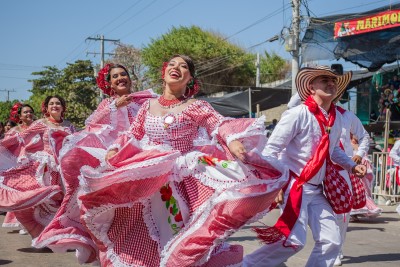
How is Cumbia danced ?
Popular cumbia is danced in couples. It is characterised by a back and forth movement, hip movement, short steps and many turns on oneself.
The basic step is the same as for salsa, but the rhythm is different: “123… 123…” a step backwards, a step on the spot, a step forwards… a pause to transfer the weight of the body to the other foot and then you start again. The pas chassé allows for variation: one foot is moved to the left while the right foot follows the movement, dragging on the ground.
Danced by couples, the woman holds a lighted candle and waves her long skirt. The man dances behind her with one hand behind his back and the other holding his hipihapa sombrero (hat). The dance steps coincide with each beat.
There are different versions of cumbia: from Colombia: Classical Cumbia, Cumbiamba, Modern Cumbia; and from Panama: Cumbia Santeña, Cumbia Mejoranera, Cumbia Coclesana, Modern Cumbia.
The Forró
The forró is a typically Brazilian dance, whose music has a theme related to the cultural and daily aspects of the northeast region of Brazil.
It is a variation of the Baião, another popular musical rhythm of the region. Forró was first known only in the south of the state of Bahia and in the north of the state of Maranhão.
It has African, European and indigenous influences. For a long time, only the Nordestinos knew how to dance and sing forró. But because of the difficult living conditions in the Nordeste, many of them left the region to find work in the south of Brazil. This migration, mainly to São Paulo and Rio de Janeiro, peaked in 1940.
The Nordestinos took with them their traditions, which they kept alive by playing their music and dancing. Their songs were mostly nostalgic laments, but also amusing anecdotes. As time went on, their music began to liven up the dances of peasants who had moved to the big cities. For a long time, only craftsmen, servants and workers were allowed to play the Forró.
Later, the singer, composer and accordionist Luis Gonzaga popularised forró throughout Brazil: By 1970, all the entertainment venues in Rio and São Paulo were playing it. These establishments were renamed “Casas de Forró”. When the genre became fashionable, the middle and upper classes began to take an interest.
Where does the word forró come from?
According to some versions, the word comes from the English “for all”. During the construction of the first railway in Pernambuco, the English company in charge organised balls for all employees. At the entrance to the ball, a sign was displayed that read “FOR ALL”.
The second version, which is also widespread, is that the word comes from the African word “forrobodó” meaning “to party”.
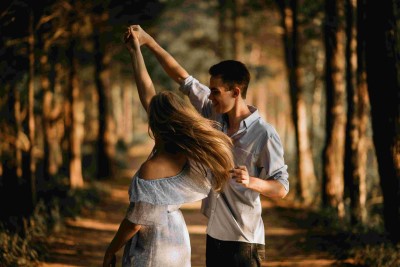
How is Forró danced ?
There are two main types of forró:
The forró rastapé: this is the traditional forró, originating from the Nordeste. The characteristic movements are simple foot movements that are repeated continuously and few arm movements.
Forró universitário (the xote): influenced by lambada, salsa and tango and originating from São Paulo. It is a very special and exciting dance.
Forró is basically a couple dance.
The main steps are relatively simple: two steps to the left, two steps to the right. The rider leads his partner, and can give the impulse to make turns among the other couples. The step is usually bouncy when danced by experienced couples.
Other types of forró also exist, such as the electronic forró and the forró sawtooth.
From the 1930s onwards, the media began to contribute increasingly to the dissemination of traditional Latin American musical and dance genres, styles and repertoires, thus contributing to their transformation and transmission internationally.
Dancing is like dreaming with your feet.
Dancing Latino is to combine elegance and sensuality.
¡Viva el baile!




